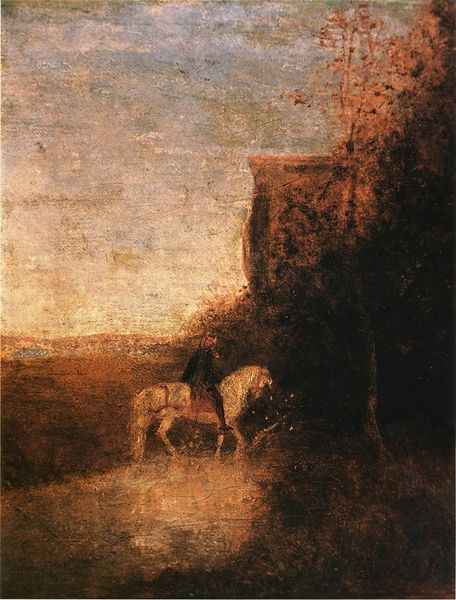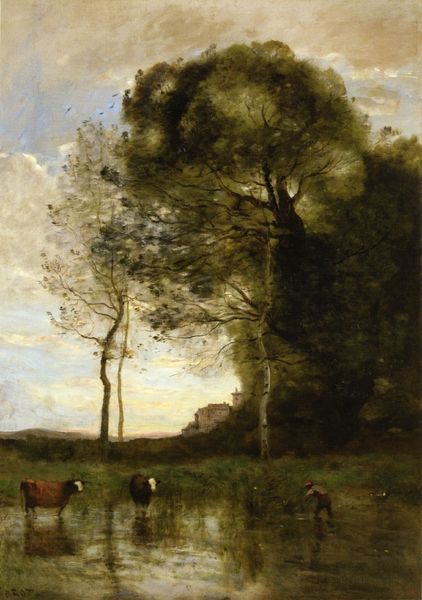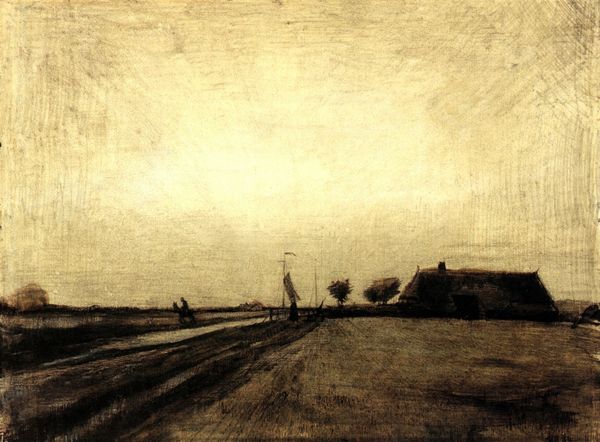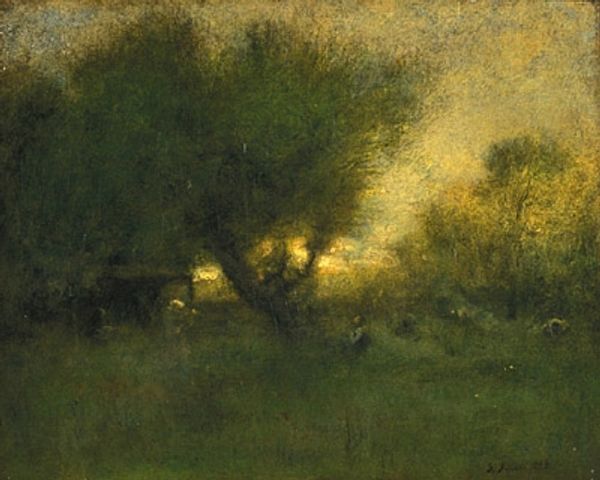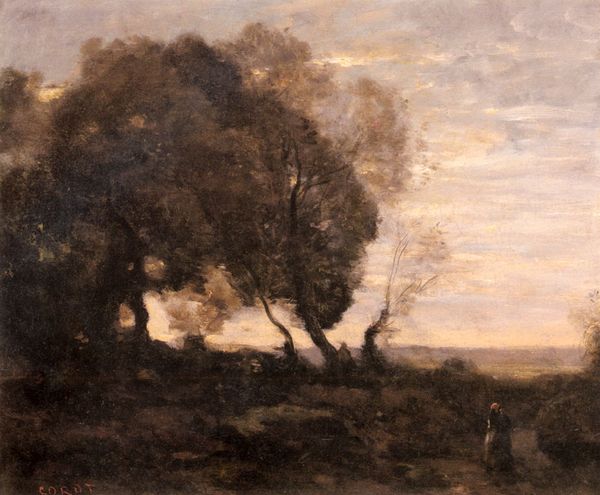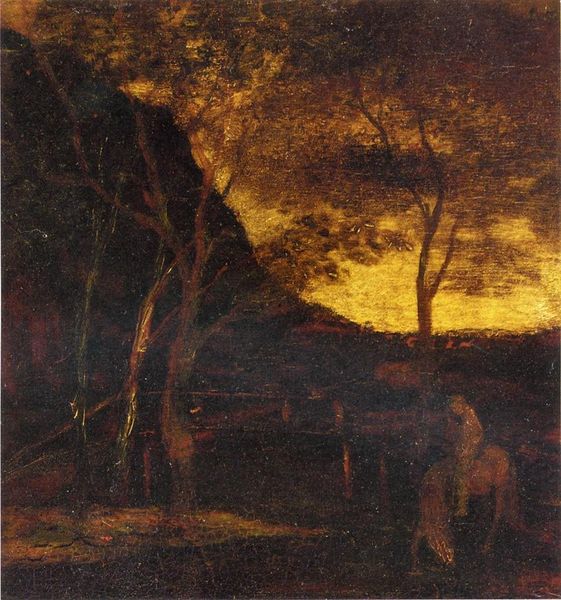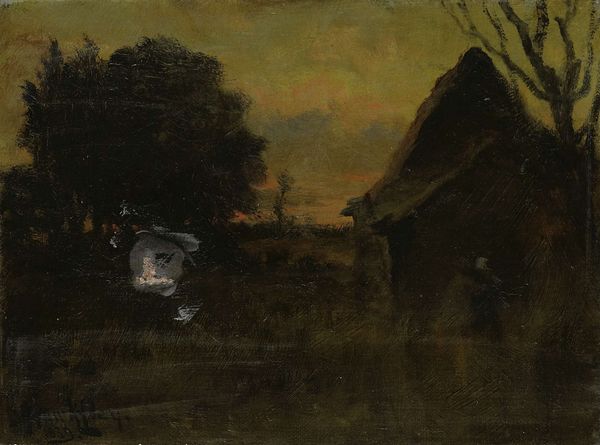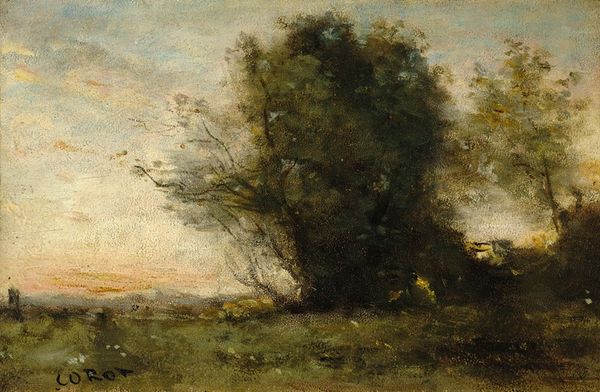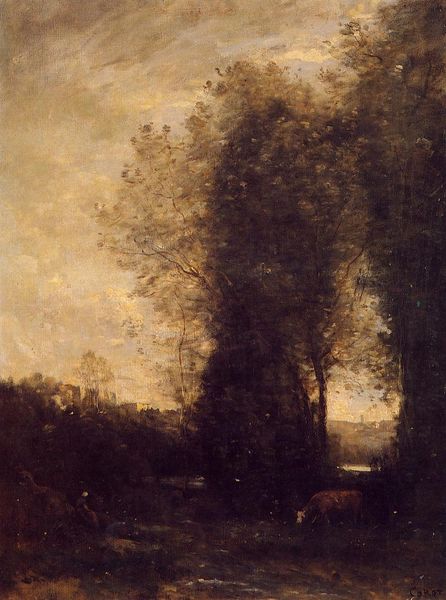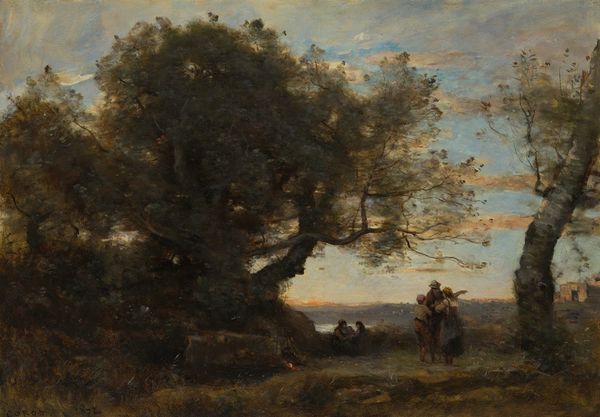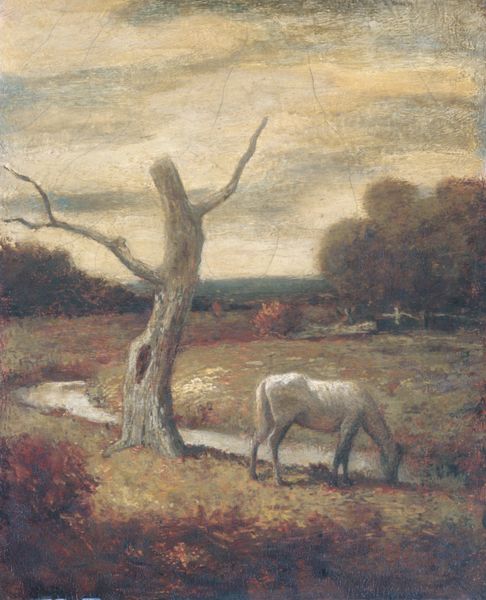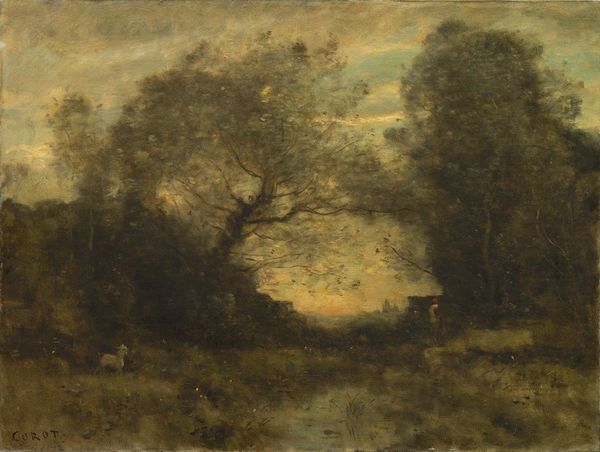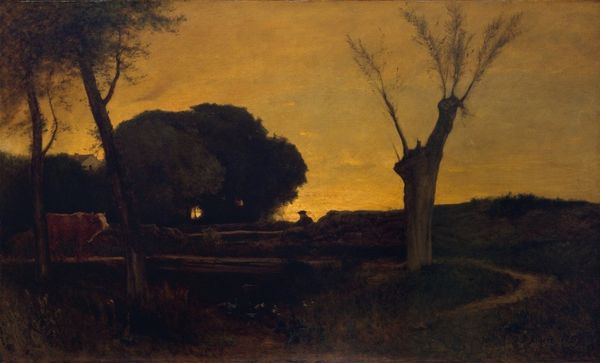
painting, oil-paint
#
painting
#
oil-paint
#
landscape
#
oil painting
#
romanticism
Copyright: Public domain
Curator: Immediately, I feel a sense of foreboding looking at this piece, a sort of darkness. The heavy shadows give it a somber feel. Editor: Indeed. Let's delve deeper. We are observing "The Farmyard", an oil painting attributed to Albert Pinkham Ryder. Its place in time is currently unspecified, though its style firmly suggests Romanticism. It's interesting how you react to its darkness, which aligns with how it might have resonated within the anxieties of a swiftly industrializing late 19th-century America. Curator: That darkness certainly resonates on a psychological level. It feels like a place of refuge perhaps, but also a space holding the weight of secrets or unfulfilled desires. I detect forms that are there but remain shrouded. There are these dense shadows and forms suggestive of buildings and figures that just disappear into the night. Editor: I agree. What appears to be a wagon in the immediate foreground along with the shadowed architecture suggests how essential farms were to American culture. And in Ryder's Romantic lens, we witness his reaction to a historical pivot as this way of life began fading into memory. His choices regarding representation underscore an elegiac lament, painting it through such dim hues and concealed forms. Curator: It absolutely speaks to memory! Even though the details are indistinct, the emotion it evokes feels universal. The farmyard transforms into a stage for contemplation, where one can easily project their own feelings of loss or nostalgia. We've always been wired for visual symbols and visual storytelling, the feelings and emotion associated with memory is so potent, the vaguer the details, the wider that symbolism becomes! Editor: Yes, Ryder had a long engagement with memory, and Romanticism as a movement consistently focused on affect and mood. This painting reflects a growing population with a growing desire for historical paintings, not merely portraiture. Perhaps Ryder is commenting on cultural anxieties related to our industrial turn. It prompts a discussion on public taste, historical record, and how paintings influence societal values. The style seems very attuned to such cultural trends of idealization and even myth-building during that epoch. Curator: Thinking of societal values of the era, it feels less like idealization, to me at least. Instead, the dim palette suggests introspection and unease about where the relentless drive toward "progress" was taking society, or potentially where it left a community behind. I now see even more deeply why people resonate with this piece. Editor: Well, perhaps, these emotional pulls reflect our contemporary anxieties as well. A timelessness surfaces, prompting reflection on progress and nostalgia that remains incredibly relevant to us now, whether this was Ryder’s explicit intention or not.
Comments
No comments
Be the first to comment and join the conversation on the ultimate creative platform.
